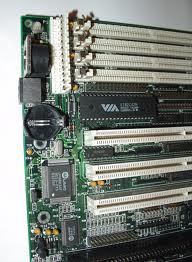Reply 20 of 42, by feipoa
- Rank
- l33t++
Congratulations! You've optimised your system.
Refering again to the Ultimate 486 Benchmark Comparison, your numbers are right were they should be for an AMD X5-160. The good news is that your motherboard is not adding an automatic 2/3 multiplier to your PCI bus. I can tell this from your PCPbench score, which is heavily reliant on the PCI bus.
Speedsys and pcpbench are just two tests and are not good average representations of CPU performance. Test your system in various games or in Windows. If you want more CPU power, you need to consider a POD100 or an IBM 5x86c. Check to see if your motherboard has 3 jumpers for the FSB. If it does, there's a good chance it has undocumented FSB settings for 60 and 66 MHz. I can only hope that your motherboard/BIOS adds a 1/2 or 2/3 multiplier for 50/60/66 MHz FSB operation. If you are able to get an IBM 5x86c running at 2x66, expect your Speedsys L1, L2, RAM to jump to 190, 73, 56 MB/s, respectively, or 195, 56, 44 MB/s for a POD100.
Plan your life wisely, you'll be dead before you know it.



